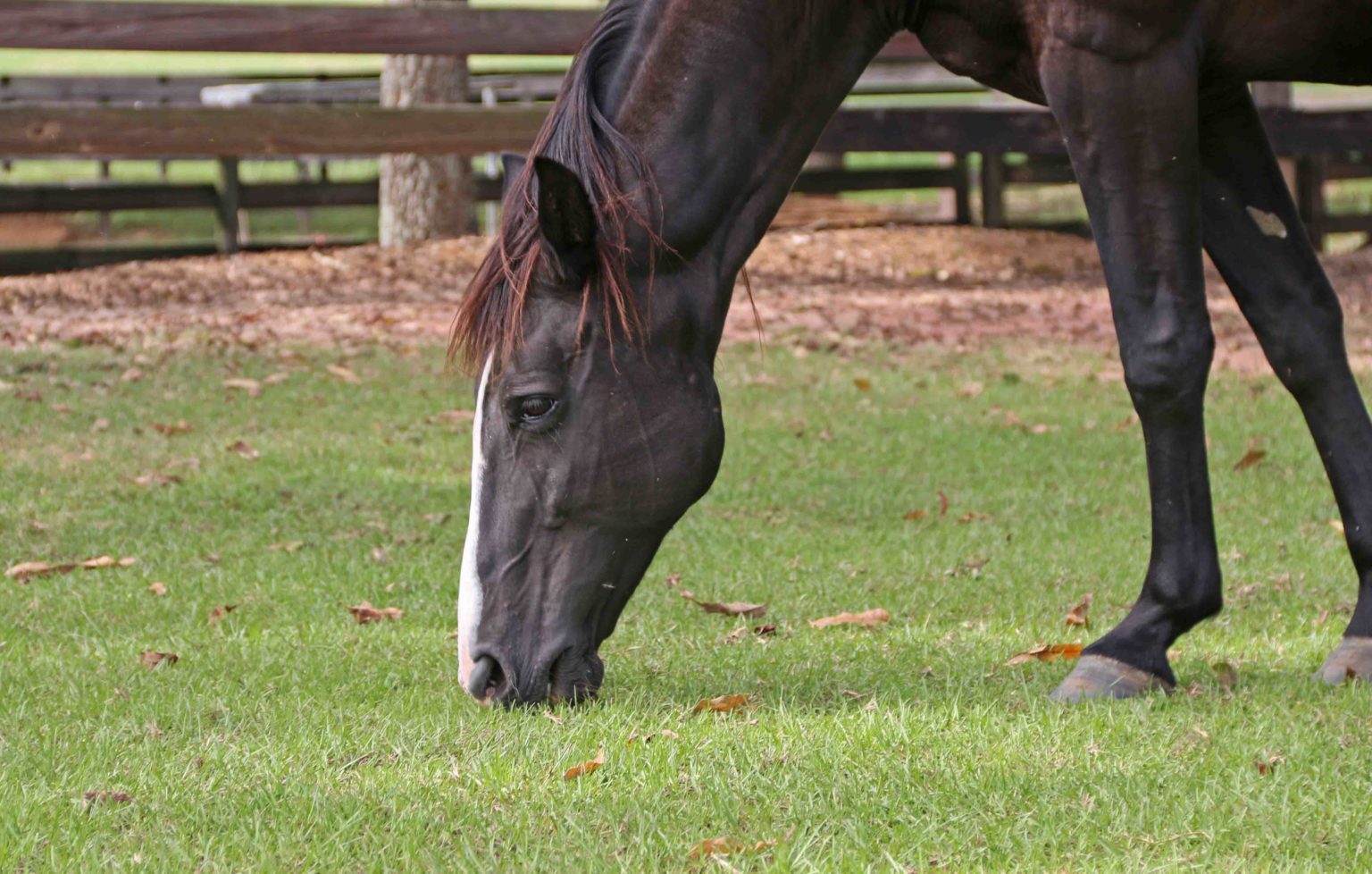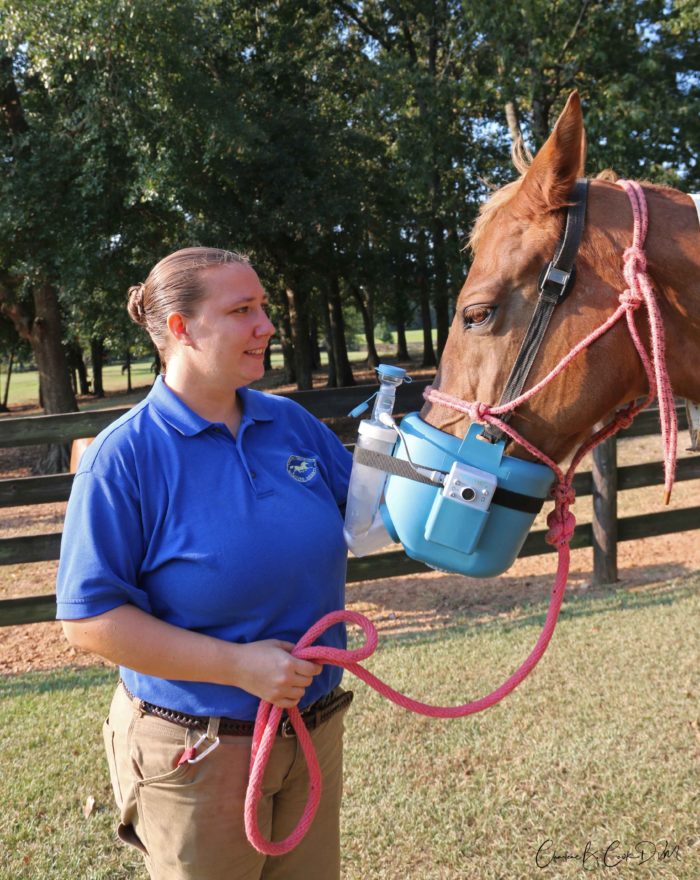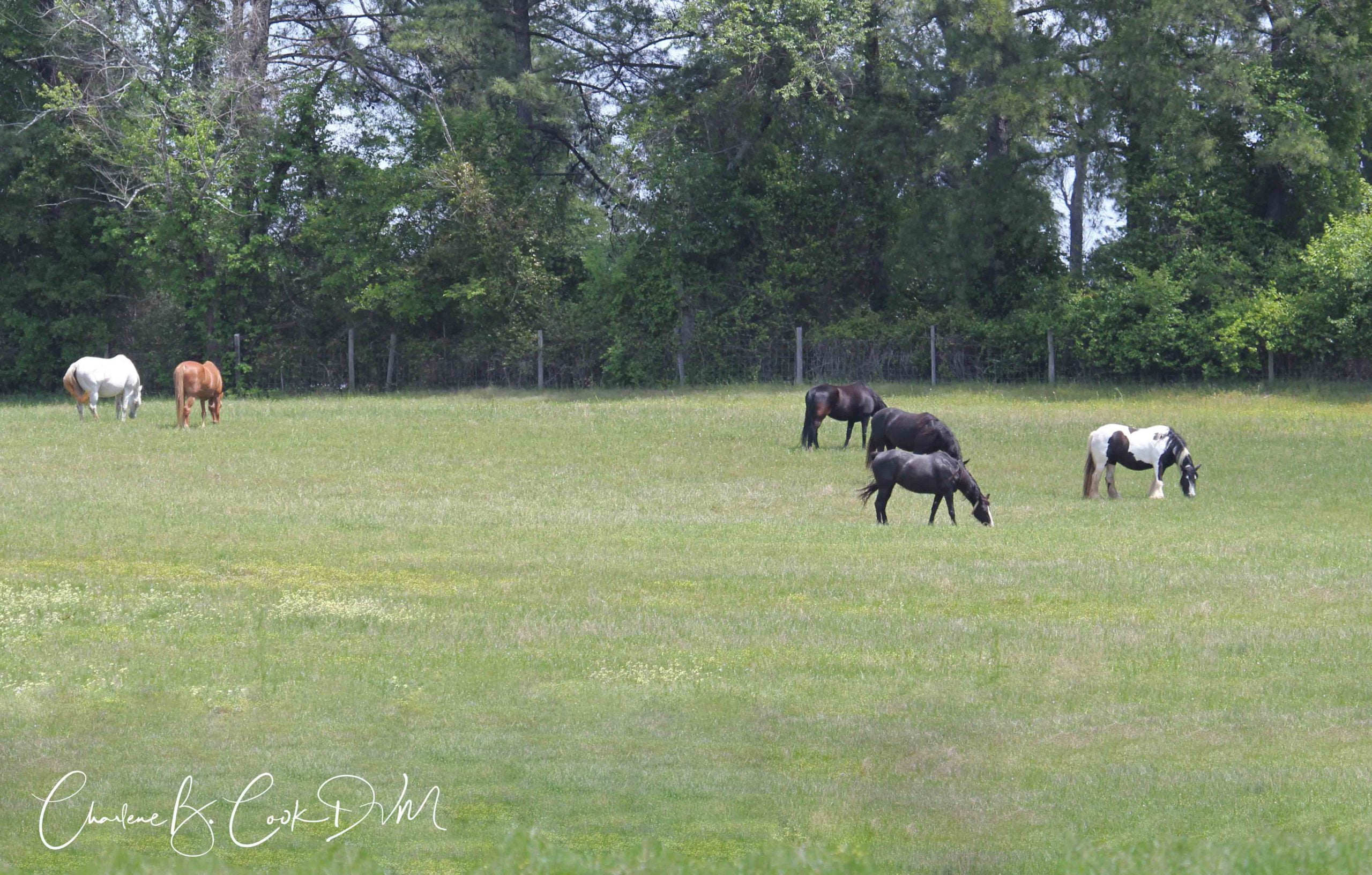Here’s a typical telephone call to our veterinary clinic. “I walked out to catch my horse for a ride and she is breathing very hard. She had trouble walking up the hill and I heard her cough several times.”
When I examine the horse she is standing with her head slightly lowered. Her nostrils flare and her abdomen pushes hard with each breath. I check her temperature, pulse and respiration and they are all elevated. I quickly draw blood and run a Serum Amyloid A test to see if she has pneumonia. The test results are done in 10 minutes we begin treatment for Summer Pasture-Associated Recurrent Airway Obstruction or SPARAO also known as Summer Asthma.
In this case and many others in our area the horse has literally become allergic to the molds and pollens that are present on the grass. It does not matter if the grass has been mowed or is lush and deep. We see these cases in the summer generally from June through October, but cases can appear earlier or later anytime the heat and humidity are high. The higher the heat and humidity the more the horse may suffer with the asthma. These cases are in adult horses who have usually been living on the same pasture for several years. Summer pasture-associated severe equine asthma has been reported most commonly in southeastern region of the United States, especially Florida, Georgia, Louisiana and Mississippi, although, it has been described in other parts of the world, including England and Scotland.

In this syndrome the horse has become allergic to the pasture. As the horse moves about grazing he is inhaling particles that cause the airways to constrict and fill with mucous. The result is airflow obstruction. Affected horses may have signs ranging from poor performance, not racing fast enough, exercise intolerance and coughing to labored breathing. Horses can be so severely affected that they cannot walk or eat. Left untreated horses can develop heart failure, pneumonia and become respiratory cripples.
This condition affects all breeds including miniature horses. Once a horse is affected he is likely to develop symptoms every year as long as he lives in the same geographical region. Removing horses from the pasture generally solves the problem. Affected horses need to be stabled at all times with only a dirt lot or “asthma paddock” for exercise. Even a few mouthfuls of grass is enough to trigger a relapse in severe cases. Once the weather has changed the horse may go back on pasture for the winter and early spring months. Owners of horses with summer asthma must be very observant and remove horses from the pasture as soon as they start to show clinical signs in the late spring or early summer.
Horses with summer asthma are best stabled on dust-free pelleted bedding. Hay should be wet before feeding when stabled. Horse with summer asthma have very sensitive respiratory tracts and it is important to avoid dust whenever possible. The barn should be well ventilated, leave the doors and windows open even in winter and take the horses out of the barn when cleaning.
When an environmental change alone doesn’t control the asthma medication may be necessary. Milder cases may respond well to antihistamines such as cetirizine. Horses with more severe clinical disease may require corticosteroids and bronchodilators. The problem with corticosteroids is that they have severe side effects including laminitis, infections and tendon breakdowns. Senior horses, pregnant mares, horses with equine metabolic syndrome or a history of laminitis should not receive systemic steroids. A better way to use corticosteroids is via nebulization. The corticosteroid is given through the airway and is delivered directly to the lungs and avoids the terrible side effects of systemic corticosteroids.
For the most severe cases allergy shots can be very helpful. To do this a special test called intradermal skin testing is done. A tiny amount of dozens of antigens are injected into the skin. The reaction is read and measured. Once the test has been completed a custom blend of allergens can be mixed for the horse. The horse then receives a weekly injection using a very tiny needle.

In summary
- Summer pasture-associated recurrent airway obstruction or Summer Asthma is a seasonal respiratory disease of adult horses;
- Clinical signs are usually associated with high environmental temperature and humidity;
- The most important form of treatment is environmental management. Leaving the horse on pasture will result in treatment failure.
- Many treatment options are available including nebulized medications, bronchodilators, corticosteroids and desensitization injections (allergy shots). Each horse requires a custom plan based upon the age and risk factors for that horse.

